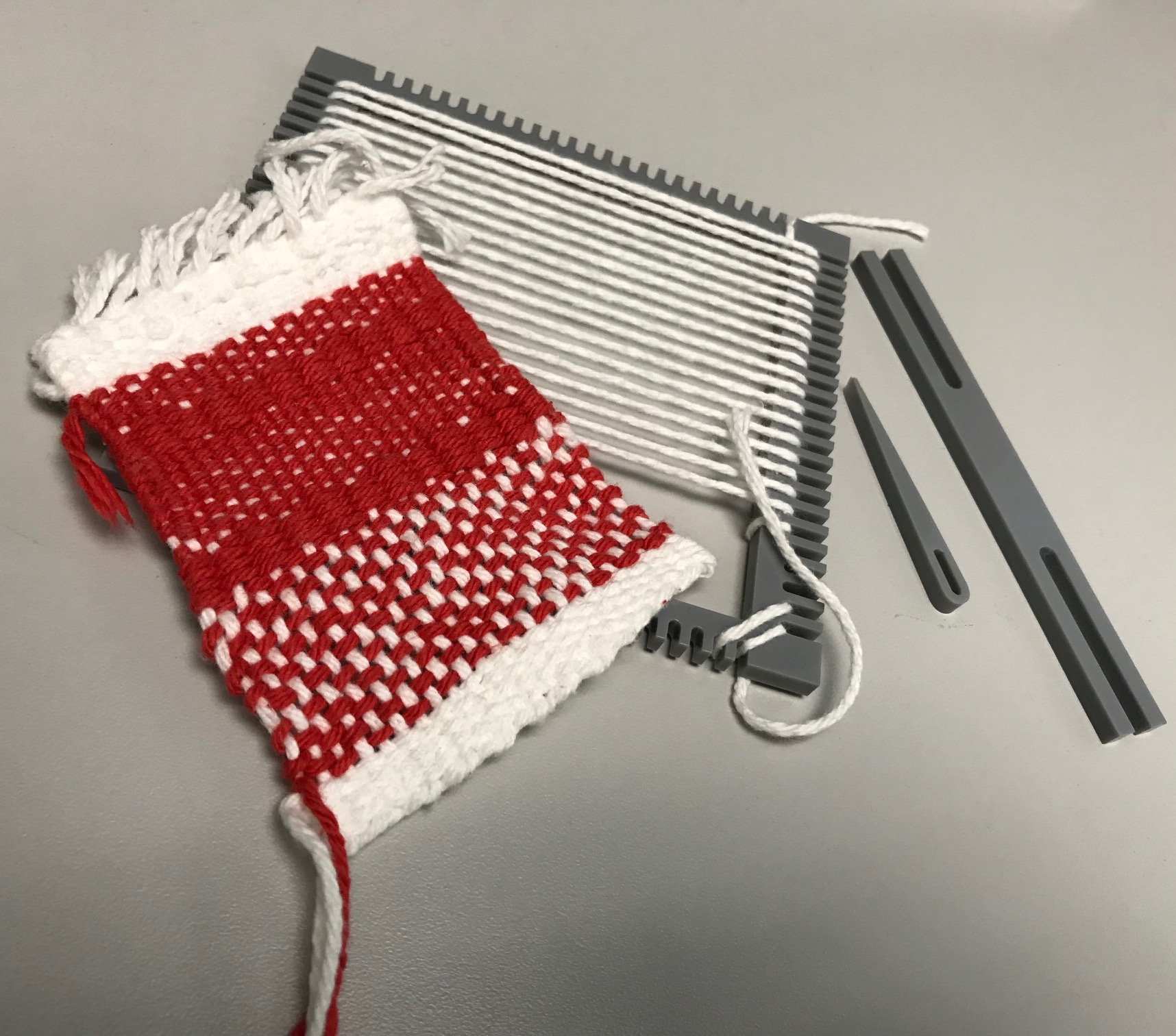This post provides background for and a preview of an interview I’ll be uploading later this week.
My little weaving was a little pathetic. My little coding wasn’t very impressive either. But the ideas being expressed and the connections between these acts and the potential for better understanding spaces for women’s empowerment made my sad little productions seem much grander than they really were.
Last week, I attended a workshop on Stony Brook’s campus called “Weaving to Code, Coding to Weave.” The event was led by Francesca Rodriguez Sawaya and Renata Gaui—designers, weavers, coders, and recent graduates from the Interactive Telecommunications Program (ITP) at NYU Tisch. According to the workshop’s promotional flyer, participants would “learn about the art of weaving to illustrate how the binary system works.” During the three-hour event, Rodriguez Sawaya and Gaui walked us through p5, a JavaScript library designed with artists in mind, and also taught us the basics of weaving.
Much like the 0s and 1s of binary code, each move of the weft along the warp was determined by one of two possible outcomes; each action affected the next, and each “line” eventually shaped the entirety of the weaving.
Near the end of the workshop, Rodriguez Sawaya discussed the way both technologies have been used as tools for empowering women. She referred to Ada Lovelace, the 19th-century mathematician who found a way to engineer a weaving machine. As Isabella Scott points out, Lovelace is often considered “the mother of computer programming,” after having designed what was essentially a proto-computer language.1
After the workshop, I got in touch with Rodriguez Sawaya, to ask if she’d be willing to comment to a greater degree on the observations she’d shared during the class, elaborating on the relationship between weaving and coding, how they direct our attention to the people behind these tasks, and how they can be used as tools for empowering women. Revisit my blog at the end of the week to check out what she said!
- Scott, Isabella. “A Brief History of Cyberfeminism.” Artsy.net, Oct. 13 2016, https://www.artsy.net/article/artsy-editorial-how-the-cyberfeminist-worked-to-liberate-women-through-the-internet. ↩
